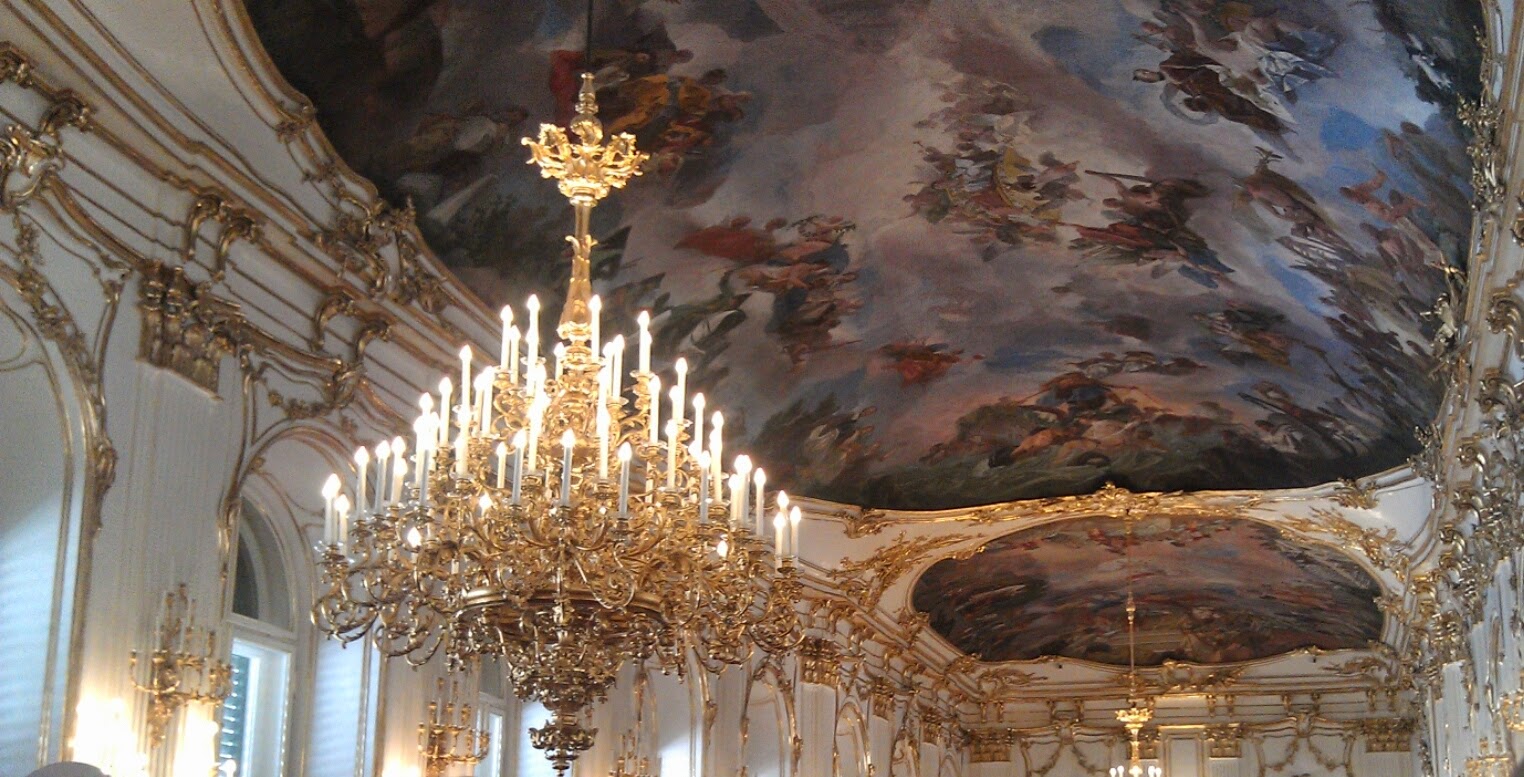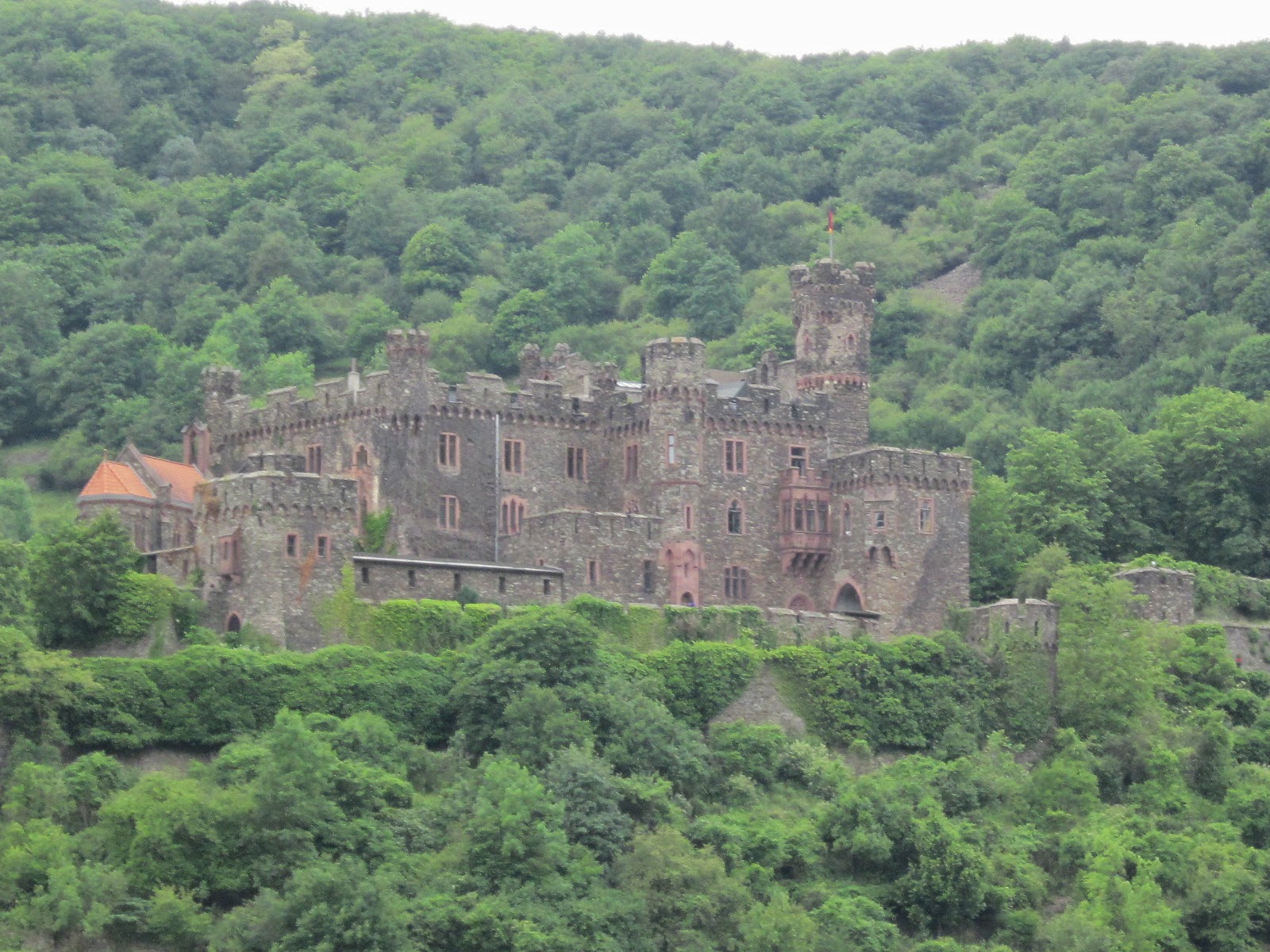Our Viking cruise included tours at each of the following ports. Optional excursions are also offered for an added cost at a few ports. The included tours frequently provided a leisurely group for passengers who preferred a less physically demanding tour. At three ports an extended walking tour was also available.
Saturday May 17 -- Budapest, Hungary
Sunday May 18 -- Budapest, Hungary
Monday May 19 -- Bratislava, Slovakia
Tuesday May 20 -- Vienna, Austria
Wednesday May 21 -- Melk, Austria
Thursday May 22 -- Passau, Germany
Friday May 23 -- Regensburg, Germany
Saturday May 24 -- Nuremberg, Germany
Sunday May 25 -- Bamberg, Germany
Monday May 26 -- Wurzburg, Germany
Tuesday May 27 -- Wertheim, Germany
Wednesday May 28 -- Koblenz, Germany
Thursday May 29 -- Cologne, Germany
Friday May 30 -- Kinderdijk, Netherlands
Saturday May 31 -- Amsterdam, Netherlands
Bratislava, Slovakia
After a guided walking tour of Slovakia's capital city, we explored St. Martin's Cathedral and returned for further exploration after dinner on the ship.
 |
| The Port of Bratislava is our first stop. |
 |
| The Bratislava Castle towers over the town |
 |
| St. Michael's Gate |
 |
| St. Martin's Cathedral |
 |
| Crypts below the Cathedral |
 |
St. Martin's was the coronation church of Bratislava.
We listened to the organist practice as we toured the sanctuary. |
Vienna, Austria
We opted for the extended up close walking tour of the city. This involved a guided tour utilizing public transportation (subway) rather than tour buses. There were only six of us on the tour, so it was very personal. Our guide was from the U.S. but had lived in Vienna for over 20 years.

Our walking tour featured the remarkable Ringstrasse, lined with imposing palaces and grand residences, encircling the medieval Innere stadt (inner city).
The Hofburg Palace was home to the Habsburgs from the first emperor in 1273 to the last in 1918. The porch on the back of the palace is where Hitler addressed the Austrians in March, 1938.
The Spanish Riding School of Vienna, Austria, is a traditional riding school for Lipizzan horses, which perform in the Winter Riding School in the Hofburg Palace.
 |
| St. Stephen's Cathedral |
 |
| St. Peter's Church |
 |
Inside of St. Peter's Church
Mass was being celebrated as it has been daily for 1600 years. |
Optional Schonbrunn Palace Tour
After lunch on Skadi, we boarded buses for the optional Schonbrunn Palace Tour. This 18th century summer palace of the Habsburgs is one of the grandest in Europe.
If this was merely their summer home with 1,441 rooms we wondered what their "rest of the year" home was like.
We had free time to roam the grounds around the Palace which include rose gardens, fountains, statues, Roman architectural features and even a small zoo.
 |
| We thought this was a very nice "back yard" |
Cruising the Wachau Valley
Melk, Austria
Our inclusive tour at this port was the Melk Abbey. A highlight of the Danube Valley this 18th Century Monastery was originally a Palace.
 |
| Garden house and grounds of Abbey |
Passau, Germany
This city lies just inside Germany at the border of Austria, at the confluence of three rivers. We boarded buses at Linz, Austria, and enjoyed an hour and a half bus ride through winding country roads to Passau.
St. Stephen's Cathedral is one of the town's foremost landmarks and is home to the largest cathedral organ in the world. It has 17,974 organ pies, 233 stops and four carillons.
We were lucky enough to hear an organ concert on this magnificent instrument.
Regensburg, Germany
We enjoyed a guided walking tour through one of Germany's best preserved medieval cities. We saw the remains of Marcus Aurelius headquarters, this being once the northern boundary of the Roman Empire.
 |
| This Old Stone Bridge, built in 1135, is a miracle of engineering for its time. |
St. Peter's Cathedral is one of the most striking in Germany. Building operations went on there for over 250 years in the middle ages. The Cathedral contains an interesting sculpture from 1280 of the joyful angel Gabriel as he delivers the good news to Mary that she will become the mother of Jesus. This statue has become know as the smiling angel.
 |
This cathedral in Regensburg is famous for its
medieval stain glass windows. The stain glass figure of St. Peter dates from 1320 and represents the
patron saint of the cathedral. |
Following the model of the Parthenon on the Acropolis the Walhalla of Germany is a hall of fame, opened in 1842, that honors laudable and distinguished people, famous personalities in German history. Our tour bus stopped here on the way to Regensburg. Later in the evening we passed by again on Skadi.
Nuremberg, Germany
Arriving mid-day and after lunch, we took a walking tour
of the old town medieval city surrounded by 13th century walls.
The tour bus also stopped at what was once the Nazi Rally
Grounds and the Documentation Center.
 |
| Imperial Castle |
 |
During our free time we visited Hauptmarkt which was bustling on
a Saturday afternoon. |
 |
After trying some lebkuchen from a market vendor,
we sat down and enjoyed a rhubarb and a cherry Blechkuchen at a bakery. |
Bamberg, Germany
We spent the morning cruising through the Main-Danube Canal. Completed in 1992 with 16 locks this canal allows continuous river travel from the Black Sea to the North Sea. One of the few cities in Germany not destroyed by World War II bombing, Bamberg is the largest old town to retain its medieval structures; because of this, it was named a UNESCO World Heritage Site in 1993.
 |
| City Hall built on a tiny island in the middle of the Regnitz River. |
 |
| Bamberg Monastery |
 |
| The town's distinctive smoke-flavored beer reminded
us of good ham. |
Wurzburg, Germany
Our half day tour included the Bishop's Residenz, one of Germany's largest and ornate palaces and also a UNESCO World Heritage Site.
 |
Former residence of the Wurzburg Prince-Bishop, built over a
70 year period beginning in 1720. The palace features a massive reception
staircase and overhead fresco ceiling of the stunning
"Four Continents". Unfortunately pictures were not allowed inside. |
 |
| Residenz Gardens |
Skadi offered hourly shuttle buses all afternoon. After our guided morning tour we spent the afternoon exploring the town and hiking up to and around the fortress.
 |
| Festung Marienberg Fortress built in 1201 |
 |
| Fortress gate and site of draw bridge |
 |
| Massive walls and moat |
 |
The Princes' Garden in the Marienberg Fortress
was based on plans from the early 18th century. |
 |
| View of the Old Stone Bridge from the Fortress |
Wertheim, Germany
After breakfast we decided to disembark and tour the town on our own, since the ship docked at the foot of the square of this small town. The historic market place includes a Glass Museum a bakery and numerous other shops. The town is dominated by the imposing ruins of the Wertheim castle set on a hill overlooking the town.
 |
Frankonian half-timbered houses in the
historical Market Square |
 |
Once the home of the Courts of Wertheim, the Wertheim
Castle is one of the most picturesque ruins in Germany with a
deep moat and impressive structure. |
 |
Wertheim is famous for glass blowing. A beautiful half-timbered
house is now used as a glass museum exhibiting
glass history and antique luxury glass. |
Cruising Middle Rhine
The Middle Rhine Valley is a UNESCO World Heritage Site. You sail past Rhine castles in various states of repair viewing idyllic small towns, churches and vineyards.
Koblenz, Germany
We disembarked at Koblenz for a tour of the Marksburg Castle. Most of the Rhine castles have been heavily damaged or largely destroyed by everything from battles to lightning, but the 800 year old Marksburg Castle is intact. It has a commanding view of the town of Braubach and the Rhine River below.
 |
Skadi docked in front of the sky tram station that takes
passengers to the Ehrenbreitstein Fortress on the
hill across the Rhine River. |
 |
| Massive statue of Kaiser Wilhelm I |
 |
| Marksburg Castle |
 |
The furnished interior rooms provided a vivid picture of
what life was like in a medieval German castle. |
 |
| Ancient armor display |
 |
Highest tower complete with a wood bridge to be burned in
case of a siege. That's where the saying comes from
"Burning your bridge behind you." |
 |
| After dinner, we took a nice walk through Koblenz. |
Cologne, Germany
After breakfast we disembarked for a guided tour of the magnificent gothic cathedral Kolner Dom and old city. Construction of the cathedral, a UNESCO World Heritage Site, began in 1248 and continued over seven centuries when it was finally completed in 1880. Since we chose to take the extended tour we also explored the Roman Settlement called Colonia Agrippina. After the guided tour we visited the Roman Praetorium.
 |
Our tour guide, a teacher, is standing with
the statues of Tünnes and Schäl. |
 |
Large Roman mosaic floor displayed in the
Roman Germanic Museum |
 |
| Cathedral Kolner Dom |
Since it was Ascension Day, we heard the bells
chiming for more than 15 minutes including the largest bell, St. Peter,
which is only rung on six special days of the year.
We had the privilege of
attending a German Mass in the Cathedral.
Much of the liturgy sounded familiar. The organ could be felt as well as heard as it resonated throughout the entire cathedral.
 |
| Although the cathedral was not bombed in WWII, the stained glass was removed to prevent breakage. |
 |
| The Catholics claim this box contains the bones of the Three Wise Men. |
 |
| Roman Underground Praetorium. |
Kinderdijk, Netherlands
We spent a leisurely morning cruising the Rhine arriving at Kinderdijk after lunch. We took a walking tour of the Kinderdijk community of working windmills and other flood management technology.
 |
| The windmill keeper lives inside the windmill with his family. |

















































































































